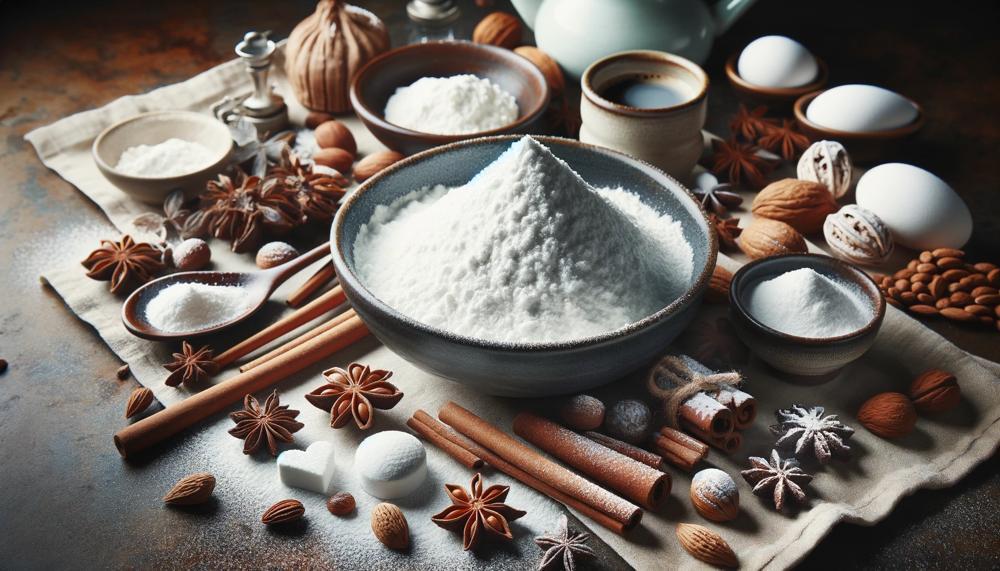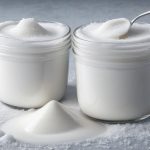Did you know that powdered sugar, also known as confectioner’s sugar or icing sugar, can last for many years without going bad? That’s right! Despite having a best-by date, powdered sugar has an indefinite shelf life when stored properly.
Let’s explore how long powdered sugar lasts, how to store it correctly, and how to identify any signs of spoilage.
Contents
Key Takeaways:
- Powdered sugar can last for many years if stored properly.
- Store powdered sugar in an airtight container at room temperature, away from moisture and strong smells.
- Check for signs of spoilage such as mold, wet clumps, odd smells, or pantry pests before using powdered sugar.
- Freezing powdered sugar is not necessary and may lead to moisture absorption and unwanted smells.
- Following proper storage tips will help ensure your powdered sugar remains fresh and ready to use.
Does Powdered Sugar Expire?
Powdered sugar, also known as confectioners’ sugar, doesn’t technically expire, but its quality will degrade over time. It can last for years if stored in an airtight container in a cool, dry place away from heat and strong smells. However, it’s best to use it within two years because its texture may change after that.
If powdered sugar is exposed to moisture or air, it won’t taste as good. It may also absorb strong odors that can affect the taste. If your powdered sugar shows signs of moisture like moist clumps, contains pests or evidence of contamination, throw it out.
To make powdered sugar last longer, you can add one teaspoon of cornstarch for every fourth of a cup of powdered sugar.
Shelf Life of Powdered Sugar

Powdered sugar, also known as confectioner’s sugar or icing sugar, has an indefinite shelf life if stored correctly. When tightly sealed and kept in a cool, dry place, away from heat sources, it can last for many years. Unlike other food products, the shelf life of powdered sugar is not affected by the best-by date printed on the packaging.
Over time, powdered sugar may clump due to moisture absorption. However, this is a common occurrence and does not necessarily mean that the sugar has gone bad. Clumping can be easily fixed by sifting the sugar before use.
“Powdered sugar, when stored properly, can last for a very long time without losing its quality. It’s important to keep it in an airtight container and store it in a cool, dry place to maintain its freshness.”
Here is a table summarizing the shelf life of powdered sugar:
| Storage Condition | Shelf Life |
|---|---|
| Tightly sealed, cool, dry place | Indefinite (many years) |
| Exposed to moisture or heat | Shortened shelf life (can clump and lose quality faster) |
Remember, the shelf life of powdered sugar can vary depending on storage conditions. It is always recommended to check the quality of the powdered sugar before using it in your recipes.
Storing Powdered Sugar
To ensure the freshness and longevity of powdered sugar, proper storage is essential. Follow these storage tips to keep your powdered sugar in optimal condition:
- Use an airtight container: Transfer powdered sugar to an airtight container to shield it from moisture and pests. This will help maintain its texture and prevent clumping.
- Choose a cool, dry area: Store the powdered sugar in a cool and dry location, such as a pantry or kitchen cabinet. Avoid areas near heat sources or direct sunlight, as they can impact the quality of the sugar.
- Avoid strong-smelling foods: Keep powdered sugar away from strong-smelling foods, as it can absorb odors easily. This will help preserve its original flavor and prevent any unpleasant taste or scent.
- Secure the original packaging: If the powdered sugar comes in a resealable package, ensure it is tightly sealed to maintain its freshness. If the packaging is not resealable, it is recommended to transfer the sugar to an airtight container for optimal storage.
Remember, freezing powdered sugar is not necessary and may result in moisture absorption and unwanted smells. Stick to these storage tips to ensure your powdered sugar remains in top-notch condition for all your baking needs!
Signs of Spoiled Powdered Sugar
When it comes to powdered sugar, it’s important to be vigilant for any signs of spoilage. Here are the key indicators to look out for:
- Mold: Inspect the powdered sugar for any presence of mold. If you notice any fuzzy or discolored patches, it’s best to discard the sugar immediately.
- Wet Clumps: While dry clumps are normal and can be sifted out, wet clumps can be a sign of spoilage. If you come across any moist or sticky lumps, it’s safest to get rid of the powdered sugar.
- Odd Smells: Trust your senses. If the powdered sugar has an unusual or off-putting odor, it’s recommended to dispose of it. A fresh, clean aroma is indicative of good quality.
- Pantry Pests: Keep an eye out for any unwanted visitors in your powdered sugar. Pantry pests, such as bugs or insects, may infest the sugar and compromise its safety. If you spot any pests, it’s wise to discard the sugar and thoroughly clean the storage area.
Remember, if you encounter any of these spoilage signs, it’s better to err on the side of caution and discard the powdered sugar. Maintaining food safety is crucial to ensuring the best quality and taste in your culinary creations.
Freezing Powdered Sugar
While powdered sugar can be frozen, it is generally not necessary and may lead to moisture absorption and unwanted smells. If you choose to freeze powdered sugar, make sure it is tightly sealed in a freezer bag or an airtight container.
Label the container with the name and date to easily identify it. When thawing frozen powdered sugar, allow it to sit at room temperature for a few hours before using to avoid clumping.
| Freezing Powdered Sugar Tips |
|---|
| Ensure powdered sugar is tightly sealed in a freezer bag or airtight container. |
| Label the container with the name and date to easily identify it. |
| When thawing frozen powdered sugar, allow it to sit at room temperature for a few hours before using to avoid clumping. |
Conclusion
After examining the shelf life and storage tips for powdered sugar, it is clear that when stored correctly, powdered sugar can last for years without expiring. By keeping it in an airtight container in a cool, dry place, away from moisture, strong smells, and pests, you can ensure the longevity of your powdered sugar.
Although clumping may occur over time, it is a simple issue that can be resolved by sifting the sugar before use. It is always advisable to check for any signs of spoilage, such as mold, wet clumps, odd smells, or pantry pests, before incorporating powdered sugar into your recipes.
Remember, refrigeration is unnecessary and can actually compromise the texture of the powdered sugar. Freezing it is also generally not recommended, as it may lead to moisture absorption and unwanted smells. Therefore, following proper storage techniques is essential to maintain the freshness and quality of your powdered sugar.
By implementing these storage tips and practices, you can ensure that your powdered sugar remains ready to use whenever you need it, enhancing the taste and appearance of your favorite baked goods. Enjoy the convenience and versatility of powdered sugar without worrying about its expiration date when stored correctly.




